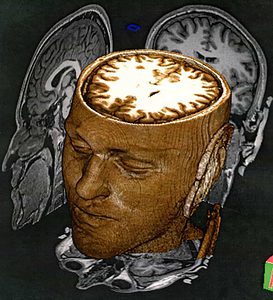An estimate 20% of Americans use some of form of psychotropic medication, amounting to a $34 billion industry. Desperate to ease their problems away with one magic pill, people are flocking in pharmacies to take their regular hits of Prozac, Valium or Vicodin. In the future, however, a new class of drugs may enter the market – drugs that are alive. A new paper published in the journal Biological Psychiatry suggests that there is evidence that after ingestion of some live organisms in adequate amounts patients suffering from psychiatric illness can be treated. Also, if certain receptors are activated by using ingesting these organisms with other probiotics, a natural high may also surface.
Probiotics are basically micro organisms which have certain health benefits when ingested. Lactic acid bacteria (LAB) and bifidobacteria are the most common types of microbes used as probiotics, as well as other types of yeast for instance. They’re sometimes used to calm gut inflammation, diarrhea, allergies and more, however researchers at the Alimentary Pharmabiotic Centre in Cork, Ireland suggest that some bacteria could be used to treat mental health problems as well such as post-traumatic stress disorder (PTSD).
These probiotics, which affect the patient’s mental disposition, are called psychobiotics. Now, the idea isn’t new, nor quite intuitive. How could bacteria that live in the gut affect the brain, though? Studies have shown that certain probiotic strains are able to modulate inflammation and bring back a healthy immunological function, so there should be an effect of improved psychiatric disposition.
Feel good bacteria

Some psychobiotic strains go further. The researchers talk about certain strains capable to modulate the function of the adrenal cortex, which is responsible for controlling anxiety and stress response. Some bacteria like Lactobacillus helveticus and Bifdobacterium longum have been shown to reduce levels of stress hormones and maintain a calmer, peaceful state. Intuition tells us that there might be many more bacteria, whose psychotropic benefits escape us at the moment, waiting to be discovered.
The last point the authors make that psychobiotics could indeed become an alternative to traditional psychotropic drug is that some bacteria are known to produce psychotropic signals such as serotonin and dopamine, inducing happy feelings. These chemicals don’t reach the brain directly, instead they stimulate cells in the gut that have the ability to signal the vagus nerve that good chemicals are in the body, which in turn then submits this information to the brain, which then acts as if the chemicals were there. If these bacteria would be used in conjunction with other stimulate the opioid and cannabinoid receptors, then a natural high effect could be produced. The conclusions were reached following preclinical evaluation in rodents, suggesting certain psychobiotics possess antidepressant or anxiolytic activity.
Dr. Timothy Dinan of University College Cork in Ireland and the psychobiotic study’s lead author says that although the research conducted on humans is sparse, “the animal studies indicate that certain psychobiotics can change brain chemistry.”
In the review, a few of these psychobiotics and their effects on neurotransmitter production are listed:
Escherichia, Bacillus, and Saccharomyces produce norepinephrine. Candida,Streptococcus, Escherichia, and Enterococcus produce serotonin, while Bacillus andSerratia have the potential to produce dopamine.
The researchers suggest more investigations should be made in the psychotropic effect of micro-organism ingestion, along with actual clinical trials on humans.
via PopSci






